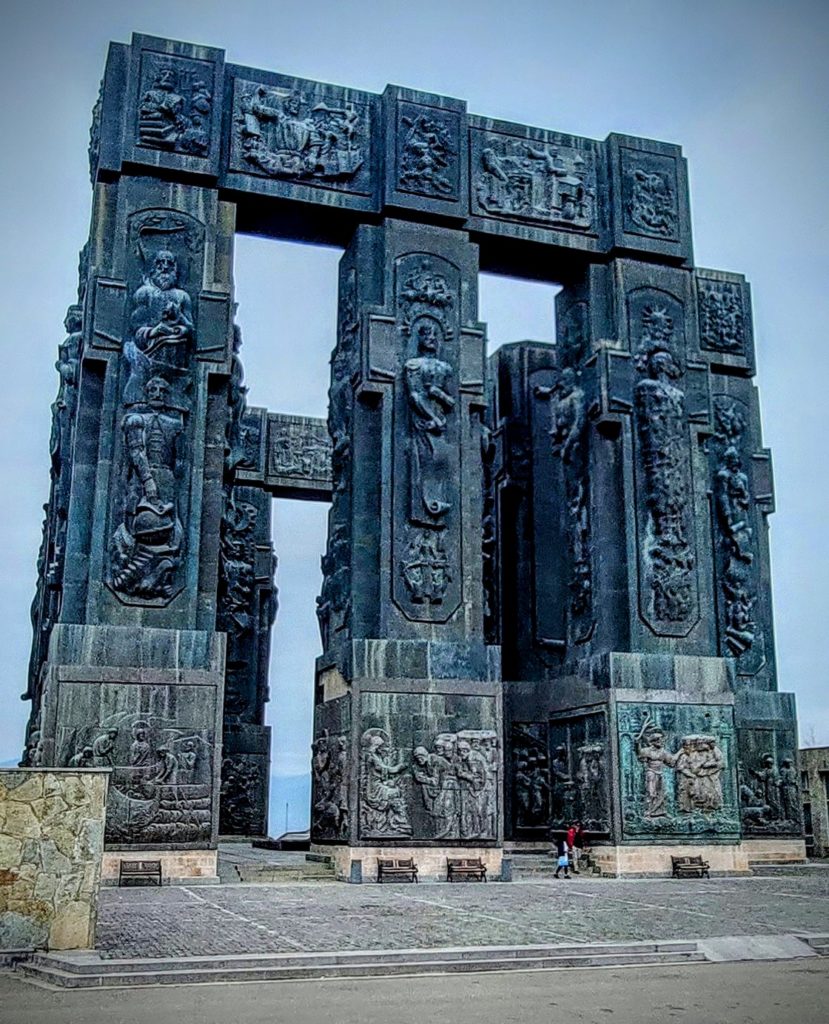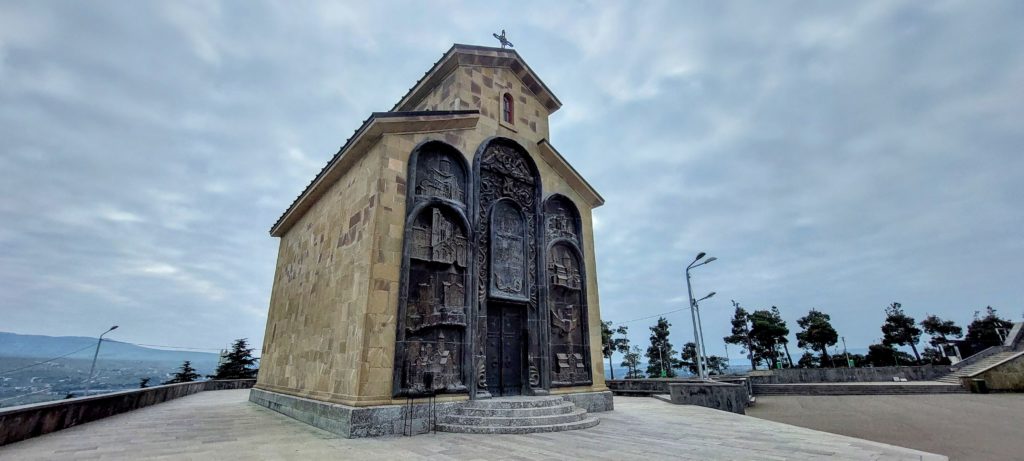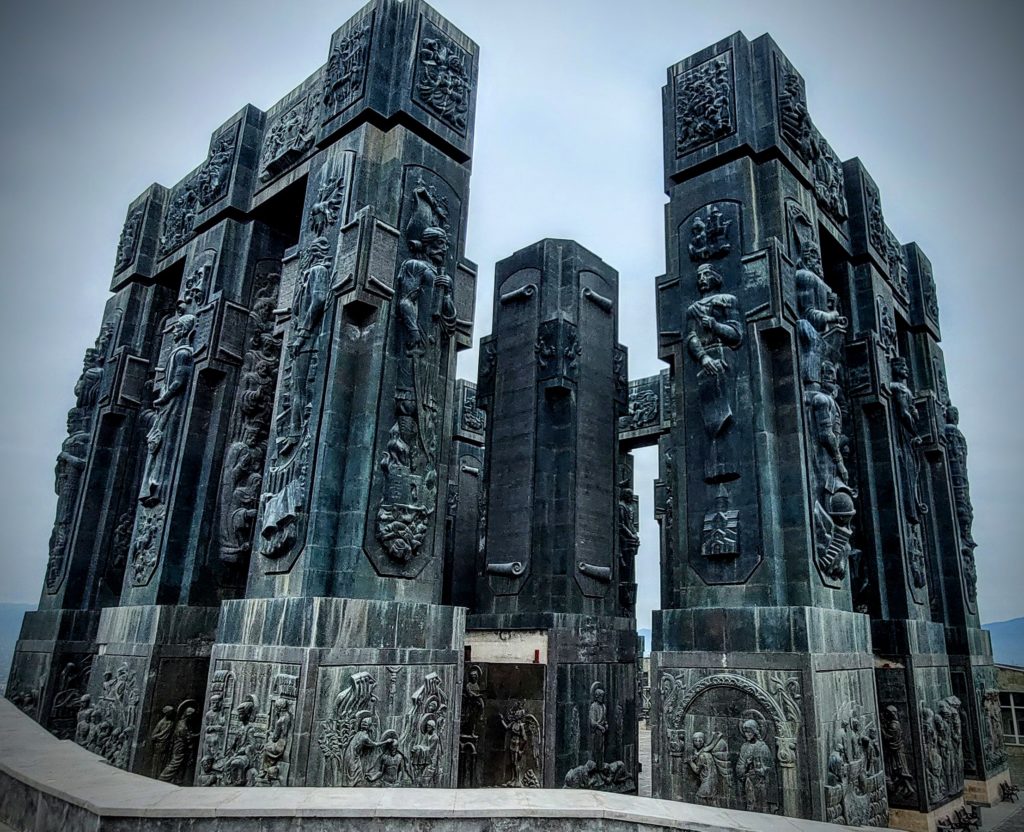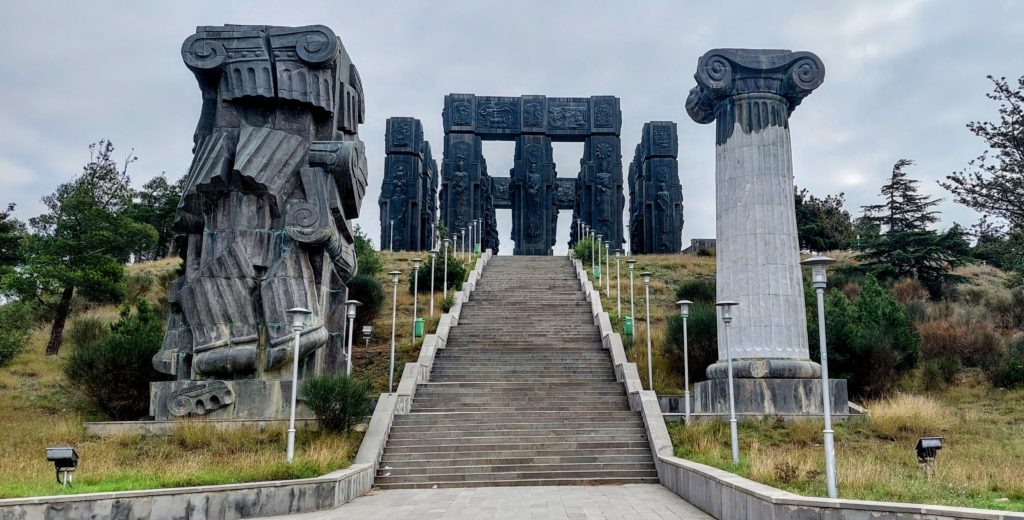
Yesterday my friend had the urge at 7:30 a.m. to visit the Chronicle of Georgia, a colossal monument designed by world-renowned contemporary artist Zurab Tsereteli.
My friend roused me from a filmy sleep with a ping on Whatsapp asking if I wanted to join her. She needed to start early because of an online English class she taught in the early afternoon.
I had the monument on my list of places to see in Tbilisi so I agreed to meet her in an hour at the Marshanavili Metro Station.
The monument turned out to be well worth getting up for.

It sat practically alone atop a small mountain (about 2000 ft. above sea level) on the outskirts of Tbilisi, accompanied only by the small church of St. Nino.
According to the artist Tsereteli’s words inscribed on a slab of marble (maybe granite) at the beginning of a long flight of steps up to the monument, it is dedicated to “the 3000th anniversary of Georgian statehood and the 2000th anniversary of Christianity dissemination.”
It’s a massive, imposing collection of towers more than 10 stories high, depicting bas relief scenes from Georgian history nearer the top and the life of Christ below.
It’s been called “Georgia’s Stonehenge” by some excitable writers but that’s a far reach, given the monument’s lack of antiquity and mystery that envelops the more famous prehistoric landmark in England.
The Chronicle is a striking visual, however, and with its themes of Georgian glory and Chistianity, a spectacular icon of faith and patriotism for the modern nation of Georgia. Tsereteli built the monument largely by 1985, but it is said to remain unfinished. Bits and pieces seem to be missing here and there but it’s not clear what major work, if any, remains to be done.

The comparatively tiny chapel of St. Nino, named for the Turkish-born woman evangelist credited with bringing Christianity to Georgia, sits rather forlornly behind the monument.
We wanted to see the inside of the chapel and its door was ajar so we should have just helped ourselves to the opportunity. But I made the mistake of nodding to the lone security guard on the site, politely suggesting our intent, and he quickly and gruffly shouted, “clo-sed! clo-sed!” And that was that, as he then kept his eye on us.
The monument is located well outside the city center of Tbilisi and the site commands sweeping views of bland, block-style housing from a past era of Soviet occupation of Georgia on one side, and what’s known as Tbilisi Sea, actually a large recreational lake and reservoir, behind it.
Access to the monument can be difficult and few visitors include it on their must-see list for Tbilisi. We saw no more than a dozen people there on our Tuesday morning visit.

We lost our way getting there on public transportation. But we enjoy walking, so once a bus brought us to the general vicinity, we got off, scouted around and took the muddy paths that climbed upward through some run-down residential areas and sparse forest till we could see the towering dark columns above us.
We found a couple of locals who, with some pointing and a few gestures, managed to put us on the right path.
We soon reached the back side of the monument where we scaled a fence rather than follow it on the outside around to the front. In all, we walked only a mile or two and climbed about 600 feet from our bus stop to the monument.
There is no admission charge and the monument seems to be open 24 hours a day.

The peaceful, almost sleepy, atmosphere surrounding the gargantuan structure is a welcome invitation to quietly contemplate the magnificence and meaning of what you see.
The complete absence of hustle and bustle around the site and its surroundings — no tour groups, food or souvenir vendors, nothing for sale at all! — is a welcome departure from the norm for such a marvelous attraction so near an otherwise popular tourist destination like Tbilisi.
With that in mind, you might want to go see it now before word spreads.
Watson’s in a blog now!!!